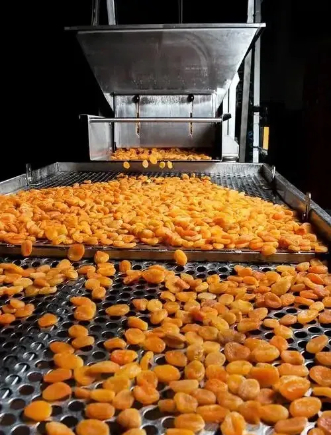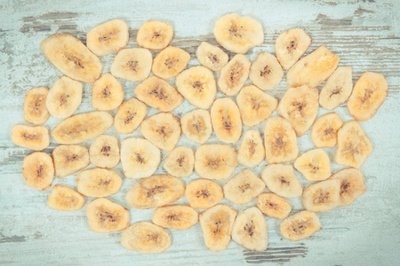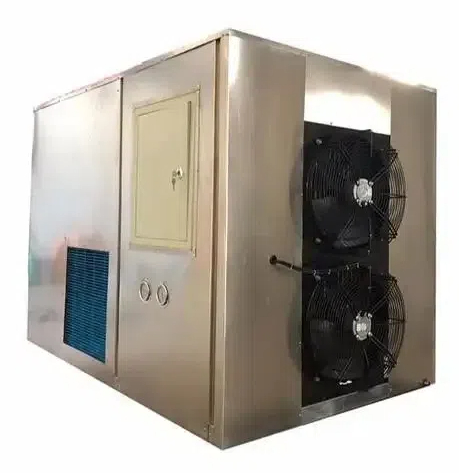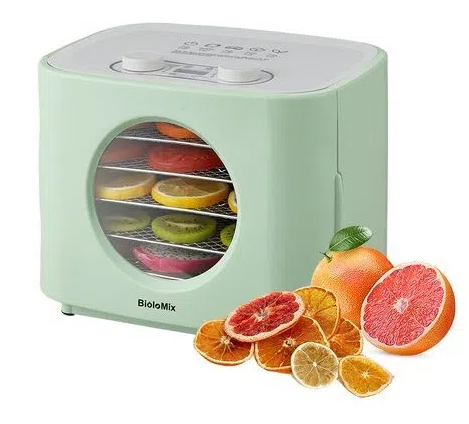
Content Menu
● Understanding Food Drying
>> Heat Pump Dryers
>> Advantages of Heat Pump Dryers
>> Disadvantages of Heat Pump Dryers
>> Condenser Dryers
>> Advantages of Condenser Dryers
>> Disadvantages of Condenser Dryers
● Key Differences Between Heat Pump and Condenser Dryers
>> 1. Energy Efficiency
>> 2. Drying Temperature
>> 3. Drying Time
>> 4. Cost
>> 5. Versatility
● Applications in the Food Industry
>> Heat Pump Dryers in Food Processing
>> Condenser Dryers in Food Processing
● Choosing the Right Dryer for Your Needs
● Conclusion
● Frequently Asked Questions
>> 1. What is the main advantage of using a heat pump dryer?
>> 2. Can condenser dryers be used for all types of food?
>> 3. How do I choose between a heat pump and a condenser dryer?
>> 4. Are heat pump dryers more expensive to maintain?
>> 5. What types of food are best suited for heat pump drying?
In the world of food processing, drying is a crucial step that significantly impacts the quality, shelf life, and flavor of food products. As a manufacturer of food drying machines in China, we understand the importance of selecting the right drying technology. Among the various drying methods available, heat pump and condenser dryers are two popular options. This article will explore the differences between these two types of dryers, focusing on their mechanisms, advantages, disadvantages, and applications in the food industry.

Understanding Food Drying
Food drying is a preservation method that removes moisture from food products, inhibiting the growth of bacteria, yeasts, and molds. This process not only extends the shelf life of food but also concentrates flavors and nutrients. Various drying technologies are available, including air drying, freeze drying, and the use of specialized drying machines like heat pump and condenser dryers.
Heat Pump Dryers
Heat pump dryers utilize a refrigeration cycle to transfer heat from the environment to the drying chamber. This technology is energy-efficient and allows for precise temperature control, making it ideal for drying sensitive food products. The process involves the following steps:
1. Evaporation: The heat pump extracts moisture from the food product and evaporates it.
2. Condensation: The moisture-laden air is then cooled, causing the water vapor to condense and be collected.
3. Reheating: The remaining air is reheated and circulated back into the drying chamber, creating a continuous drying cycle.
Advantages of Heat Pump Dryers
1. Energy Efficiency: Heat pump dryers consume less energy compared to traditional drying methods, making them cost-effective in the long run.
2. Low Operating Temperatures: They operate at lower temperatures, which helps preserve the nutritional value and flavor of food products.
3. Versatility: Heat pump dryers can be used for a wide range of food products, including fruits, vegetables, herbs, and meats.
4. Environmentally Friendly: By recycling heat, these dryers reduce greenhouse gas emissions and energy consumption.
Disadvantages of Heat Pump Dryers
1. Initial Cost: The upfront investment for heat pump dryers can be higher than other drying technologies.
2. Longer Drying Times: While they are energy-efficient, heat pump dryers may take longer to dry food products compared to other methods.
Condenser Dryers
Condenser dryers, on the other hand, operate by using a heating element to warm the air, which is then circulated through the drying chamber. The warm air absorbs moisture from the food, and the moisture-laden air is then cooled, causing the water vapor to condense. The condensed water is collected, and the dry air is reheated and recirculated.

Advantages of Condenser Dryers
1. Faster Drying Times: Condenser dryers typically have shorter drying times compared to heat pump dryers, making them suitable for high-volume production.
2. Lower Initial Investment: They are generally less expensive to purchase than heat pump dryers.
3. Simplicity: The technology is straightforward, making maintenance and operation easier.
Disadvantages of Condenser Dryers
1. Higher Energy Consumption: Condenser dryers tend to consume more energy, which can lead to higher operational costs.
2. Higher Operating Temperatures: The higher temperatures used in condenser dryers can degrade the quality of sensitive food products.
Key Differences Between Heat Pump and Condenser Dryers
1. Energy Efficiency
Heat pump dryers are known for their energy efficiency, utilizing a closed-loop system that recycles heat. In contrast, condenser dryers consume more energy due to their reliance on heating elements.
2. Drying Temperature
Heat pump dryers operate at lower temperatures, making them suitable for drying delicate food items without compromising their quality. Condenser dryers, however, operate at higher temperatures, which can affect the nutritional value and flavor of certain foods.
3. Drying Time
Condenser dryers generally offer faster drying times, making them ideal for large-scale operations where time is of the essence. Heat pump dryers may take longer but provide better quality drying.
4. Cost
While heat pump dryers have a higher initial cost, their energy efficiency can lead to lower operational costs over time. Condenser dryers are more affordable upfront but may incur higher energy bills.
5. Versatility
Heat pump dryers are versatile and can handle a wide range of food products, while condenser dryers may be better suited for specific applications.
Applications in the Food Industry
Both heat pump and condenser dryers have their place in the food industry, depending on the specific needs of the operation.
Heat Pump Dryers in Food Processing
Heat pump dryers are ideal for drying fruits, vegetables, herbs, and meats. Their ability to operate at low temperatures makes them suitable for preserving the quality of sensitive products. For example, when drying fruits like apples or strawberries, heat pump dryers can maintain the vibrant colors and flavors that are often lost in higher-temperature drying processes.
In addition to fruits, heat pump dryers are also effective for drying vegetables such as carrots and bell peppers. The low-temperature drying process helps retain the nutrients and flavors, making the final product more appealing to consumers. Furthermore, herbs like basil and oregano benefit from heat pump drying, as the delicate oils and aromas are preserved, enhancing the overall quality of the dried product.
Condenser Dryers in Food Processing
Condenser dryers are often used in high-volume operations where speed is essential. They are suitable for drying grains, nuts, and other robust food products that can withstand higher temperatures. For instance, when drying nuts, the faster drying times of condenser dryers can help maintain the desired texture and flavor.
Moreover, condenser dryers are commonly used in the production of dried pasta and rice. The quick drying process ensures that these products are ready for packaging and distribution in a timely manner. Additionally, they are effective for drying meat products, such as jerky, where a rapid drying process is necessary to prevent spoilage.
Choosing the Right Dryer for Your Needs
When selecting between a heat pump dryer and a condenser dryer, it is essential to consider several factors that can influence your decision:
1. Type of Food Products: Assess the types of food you will be drying. If you are working with delicate items that require low temperatures, a heat pump dryer may be the better choice. Conversely, if you are drying robust products that can handle higher temperatures, a condenser dryer may suffice.
2. Production Volume: Consider the scale of your operation. For high-volume production, condenser dryers may offer the speed needed to keep up with demand. However, if quality is a priority, heat pump dryers can provide superior results.
3. Energy Costs: Evaluate your energy costs and budget. While heat pump dryers may have a higher initial investment, their energy efficiency can lead to significant savings over time. On the other hand, if upfront costs are a concern, condenser dryers may be more appealing.
4. Space and Installation: Consider the space available for installation. Heat pump dryers may require more space due to their additional components, while condenser dryers are often more compact.
Conclusion
In conclusion, both heat pump and condenser dryers offer unique advantages and disadvantages for food drying applications. Heat pump dryers excel in energy efficiency and quality preservation, making them ideal for sensitive food products. On the other hand, condenser dryers provide faster drying times and lower initial costs, making them suitable for high-volume operations.
When choosing between these two technologies, it is essential to consider the specific needs of your food processing operation, including the types of products being dried, energy costs, and desired drying times. By understanding the differences between heat pump and condenser dryers, food manufacturers can make informed decisions that enhance product quality and operational efficiency.

Frequently Asked Questions
1. What is the main advantage of using a heat pump dryer?
The main advantage of a heat pump dryer is its energy efficiency, which allows for lower operational costs and better preservation of food quality.
2. Can condenser dryers be used for all types of food?
While condenser dryers can be used for many food types, they are best suited for robust products that can withstand higher drying temperatures.
3. How do I choose between a heat pump and a condenser dryer?
Consider factors such as the types of food you will be drying, energy costs, and the importance of preserving flavor and nutrients.
4. Are heat pump dryers more expensive to maintain?
Heat pump dryers may have higher initial costs, but their energy efficiency can lead to lower overall maintenance and operational costs.
5. What types of food are best suited for heat pump drying?
Heat pump dryers are ideal for drying fruits, vegetables, herbs, and meats, as they operate at lower temperatures that preserve quality.












